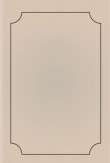You are here
قراءة كتاب Hardy Ornamental Flowering Trees and Shrubs
تنويه: تعرض هنا نبذة من اول ١٠ صفحات فقط من الكتاب الالكتروني، لقراءة الكتاب كاملا اضغط على الزر “اشتر الآن"

Hardy Ornamental Flowering Trees and Shrubs
except in the leaves, which are sharp pointed, and like that species delights to grow in damp positions. The flowers are white and drooping, and the growth more robust than is that of C. alnifolia generally. For planting by the pond or lake-side, the Pepper Trees are almost invaluable.
C. ALNIFOLIA.—Alder-leaved Pepper Tree. North America, 1831. A rather stiff-growing shrub of about 5 feet in height, with leaves resembling those of our common Alder, and bearing towards the end of July spikes of almost oppressively fragrant dull-white flowers at the tips of the branches. It is a valuable shrub, not only in an ornamental way, but on account of it thriving in damp, swampy ground, where few others could exist, while at the same time it will succeed and flower freely in almost any good garden soil.
COCCULUS.
COCCULUS CAROLINUS.—This is a half hardy, twining shrub, of free growth when planted by a tree stem in a sheltered wood, but with by no means showy flowers; indeed, it may be described in few words as a shrub of no great beauty nor value.
C. LAURIFOLIUS, from the Himalayas and Japan, is even less hardy than the above, although, used as a wall plant, it has survived for many years in the south and west of England. The foliage of this species is neat and ornamental, but liable to injury from cold easterly winds.
COLLETIA.
COLLETIA CRUCIATA (syn C. bictonensis).—Chili, 1824. With flattened woody branches, and sharp-pointed spines which take the place of leaves, this is at once one of the most singular of hardy flowering shrubs. It forms a stout dense bush about 4 feet high, and bears quantities of small white flowers, which render the plant one of great beauty during the summer months.
C. SPINOSA.—Peru, 1823. This species grows fairly well in some parts of England and Ireland, and is a curious shrub with awl-shaped leaves, and, like the other members of the family, an abundant producer of flowers. It thrives best as a wall plant, and when favourably situated a height of 12 feet is sometimes attained.
COLUTEA.
COLUTEA ARBORESCENS.—Bladder Senna. France, 1548. This is a common plant in English gardens, bearing yellow Pea-shaped flowers, that are succeeded by curious reddish bladder-like seed pods. It grows to 10 feet or 12 feet in height, and is usually of lax and slender growth, but perfectly hardy.
C. CRUENTA (syn C. orientalis and C. sanguine).—Oriental Bladder Senna. Levant, 1710. This is a free-growing, round-headed, deciduous bush, of from 6 feet to 8 feet high when fully grown. The leaves are pinnate and glaucous, smooth, and bright green above, and downy beneath. Flowers individually large, of a reddish-copper colour, with a yellow spot at the base of the upper petal. The fruit is an inflated boat-shaped reddish pod. The Bladder Sennas are of very free growth, even in poor, sandy soil, and being highly ornamental, whether in flower or fruit, are to be recommended for extensive cultivation.
CORIARIA.
CORIARIA MYRTIFOLIA.—South Europe, 1629. A deciduous shrub growing to about 4 feet in height, with Myrtle-like leaves, and upright terminal racemes of not very showy flowers, produced about mid-summer—generally from May to August. For its pretty foliage and the frond-like arrangement of its branches it is principally worthy of culture. From southern Europe and the north of Africa, where it is an occupant of waste ground and hedges, but still rare in our gardens.
CORNUS.
CORNUS ALBA.—White-fruited Dogwood. Siberia, 1741. This is a native of northern Asia and Siberia, not of America as Loudon stated. For the slender, red-barked branches and white or creamy flowers, this species is well worthy of notice, while the white fruit renders it very distinct and effective. It grows to about 10 feet in height. C. alba Spathi is one of the most ornamental of shrubs bearing coloured leaves, these in spring being of a beautiful bronzy tint, and changing towards summer to a mixture of gold and green, or rather an irregular margin of deep gold surrounds each leaf. It was first sent out by the famous Berlin nurseryman whose name it bears. C. alba Gouchaulti is another variegated leaved variety, but has no particular merit, and originated in one of the French nurseries.
C. ALTERNIFOLIA.—North America, 1760. This species is a lover of damp ground, and grows from 20 feet to nearly 30 feet high, with clusters of pale yellow flowers, succeeded by bluish-black berries that render the plant highly ornamental. It is still rare in British gardens.
C. AMOMUM (syn C. sericea).—From the eastern United States. It is a low-growing, damp-loving shrub, with yellowish-white flowers, borne abundantly in small clusters. It grows about 8 feet in height, and has a graceful habit, owing to the long and lithe branches spreading regularly over the ground. The fruit is pale blue, and the bark a conspicuous purple.
C. ASPERIFOLIA is another showy American species, with reddish-brown bark, hairy leaves, of small size, and rather small flowers that are succeeded by pearly-white berries borne on conspicuous reddish stalks.
C. BAILEYI resembles somewhat the better-known C. stolonifera, but it is of more erect habit, is not stoloniferous, has rather woolly leaves, at least on the under side, and bears yellowish-white fruit. It grows in sandy soil, and is a native of Canada.
C. CALIFORNICA (syn C. pubescens) grows fully 10 feet high, with smooth branches, hairy branchlets, and cymes of pretty white flowers, succeeded by white fruit. It occurs from southern California to British Columbia.
C. CANADENSIS.—Dwarf Cornel or Birchberry. Canada, 1774. This is of herbaceous growth, and remarkable for the large cream-coloured flower bracts, and showy red fruit.


